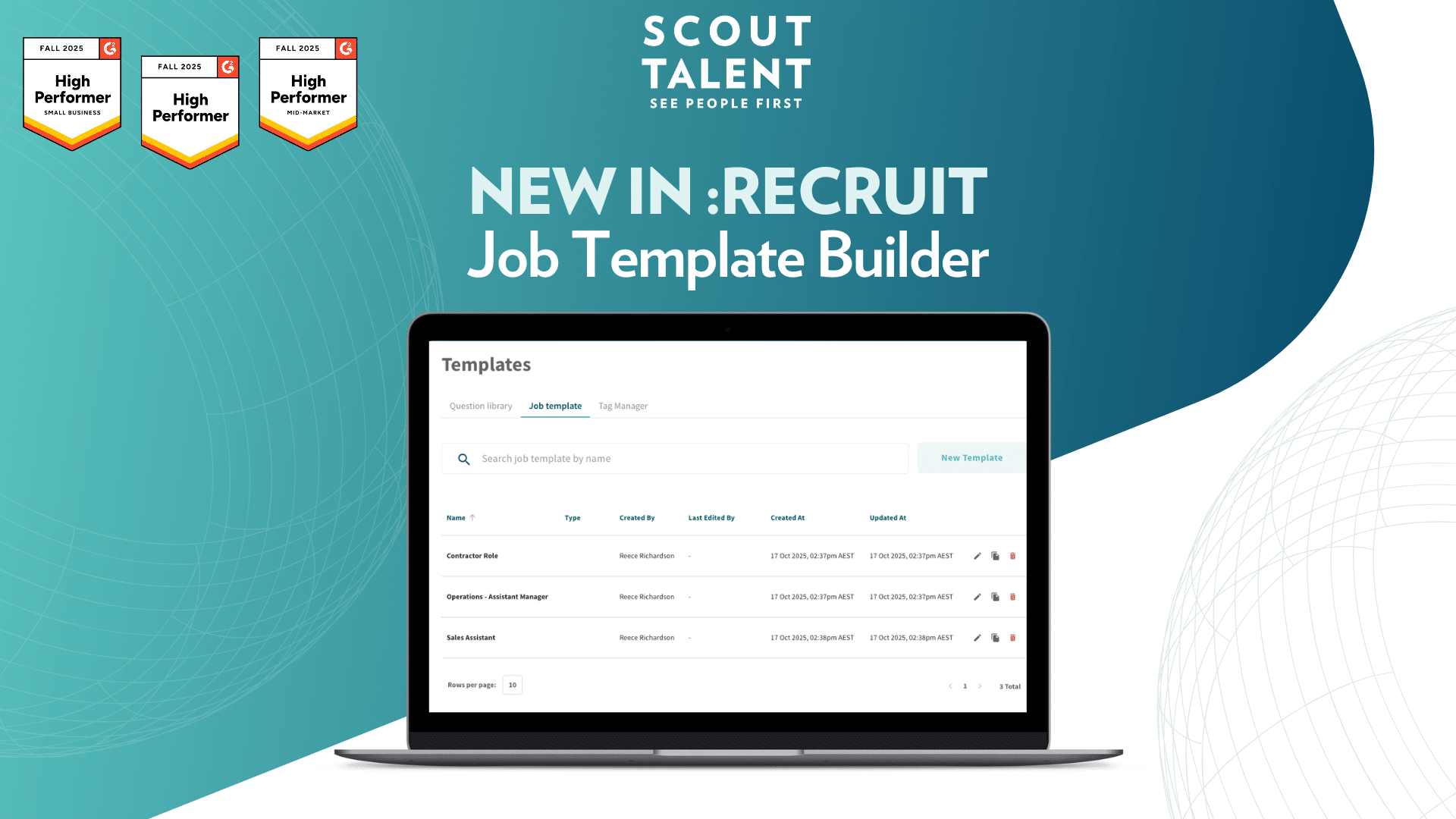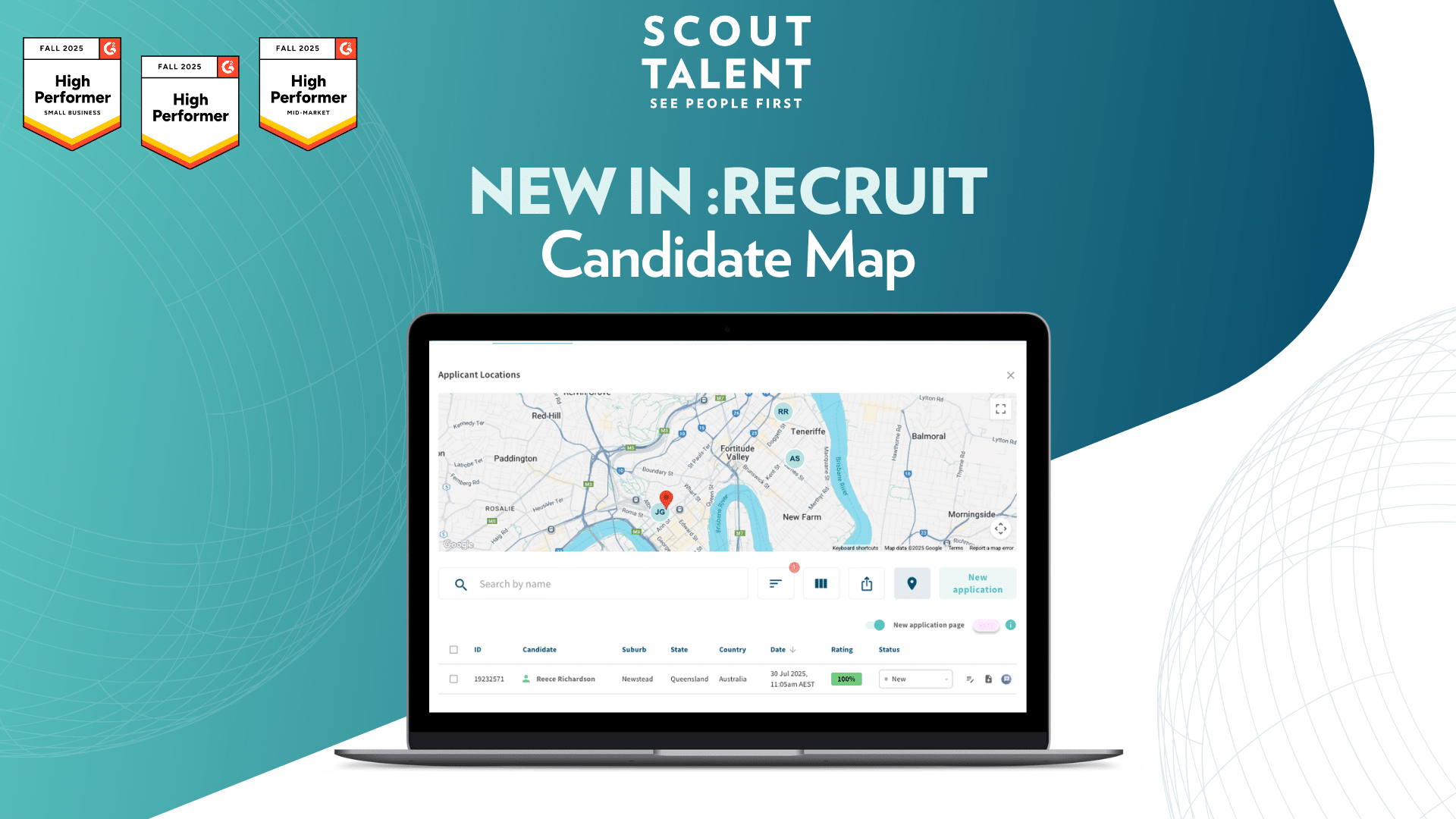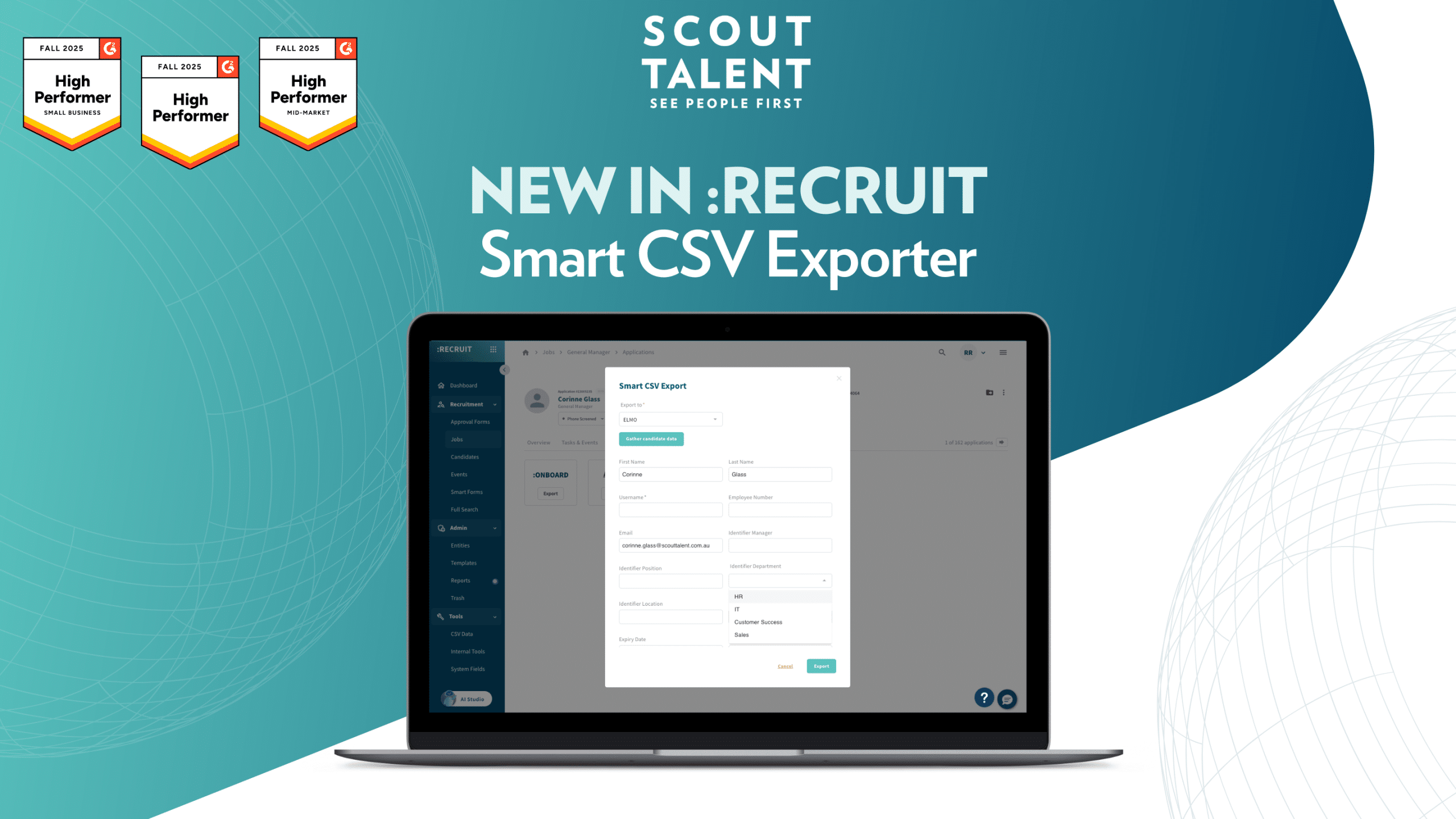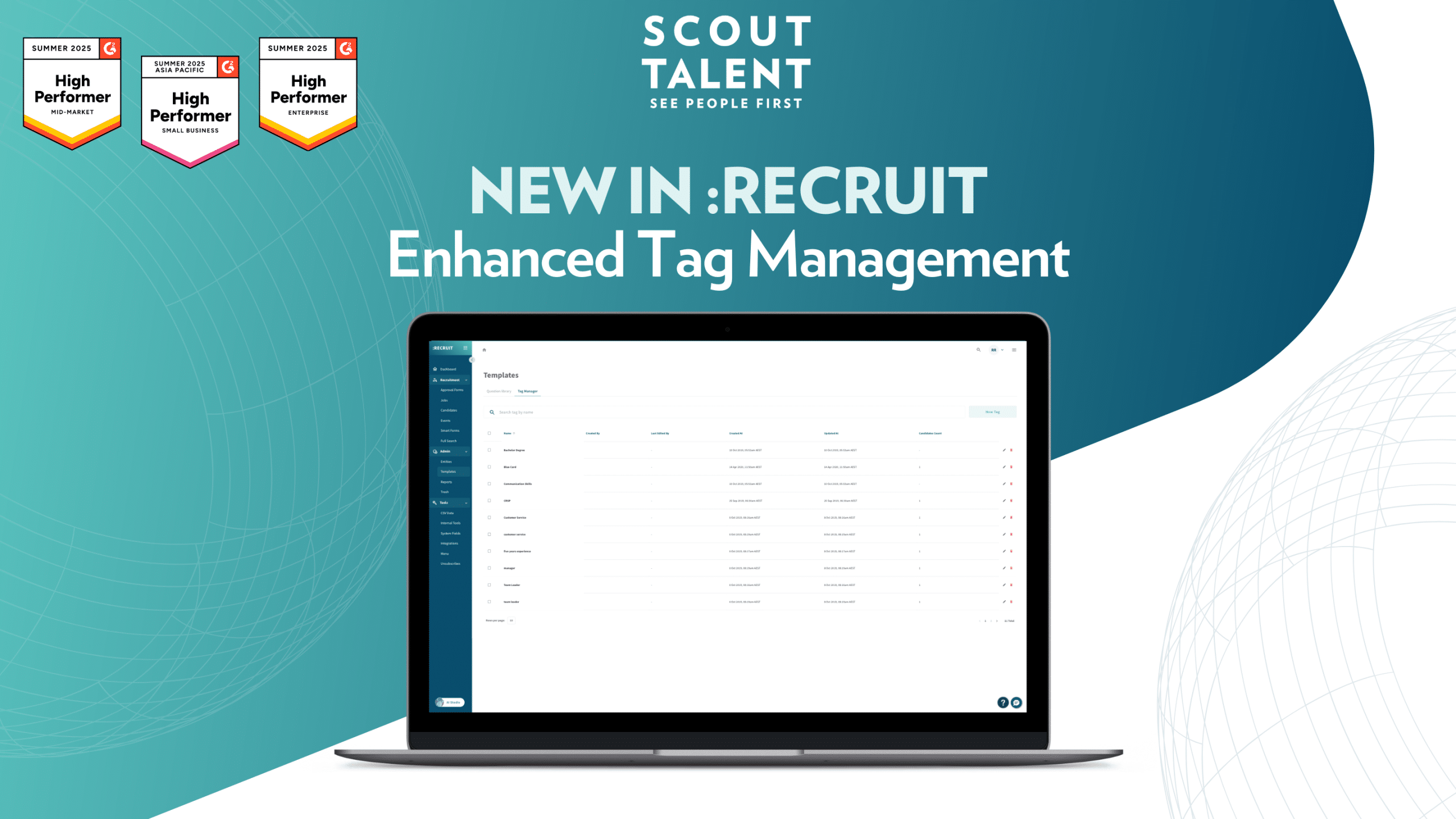Small Budgets, Big Goals… Here’s How the Best Teams Are Still Winning
Imagine this as a stretched thin recruiter in 2025:
You had multiple roles to fill. Your budget was tighter than ever. Maybe you lost another recruiter in your team to headcount freezes, or got told to “make do” until next quarter. And somehow, expectations didn’t go down… they went up.
Sound familiar?
In 2025 (and heading into 2026), hiring teams globally are being asked to hit bigger goals with fewer resources… and less support.
The reality though? Most of them are still using the same playbook they used when times were good. That’s why we’re seeing burnout spike, pipelines stall, and top candidates slip through the cracks.
But not everywhere. Some TA teams are actually thriving.
No new headcount. No giant spend. Just smarter processes, sharper alignment, and a faster path to great hires.
In our October webinar, we covered this topic in depth – Watch On-Demand Webinar: Hiring in a Tight Budget: How Top TA Teams Hit Big Goals With Lean Resources.
The Cost of Doing Nothing Is Higher Than You Think
When budgets shrink, the default reaction is to pause hiring, delay tools, or spread your team even thinner.
But what does that actually cost? Here’s what we’re seeing on the ground:
- Time lost to manual admin
- Dropped candidates due to ghosting or misalignment
- Reactive hiring that leads to rework, burnout, or even bad hires
We explore this more deeply in our post on The Real Cost of a Bad Hire, where we break down how one wrong hire doesn’t just drain the budget… it takes a toll on productivity, culture, and long-term growth.
Take it from a construction client we worked with earlier this year:
They paused requisitions for three critical roles to “save budget.” But without a candidate pipeline to fall back on, they had to scramble three months later… and the lost opportunity cost far outweighed the short-term savings.
Freezing might feel safe, but it often costs more in the long run if growth is part of your plan as an organization.
The 3 Common Mistakes Holding Lean Teams Back
When teams are under pressure, these mistakes are easy to fall into… and hard to crawl out of.
1. Delaying Verification
Pushing reference checks, background screenings, or work eligibility to the end of the funnel slows things down, leading to late-stage reversals.
One of our clients had an international candidate make it to the final stage… only to find out they didn’t have Canadian work rights. That’s three weeks of wasted back-and-forth. And two missed candidates who dropped off while waiting.
2. Defaulting to DIY
When budgets shrink, the instinct is to keep hiring in-house – no agencies, no support, just the mindset of “we’ll handle it ourselves.”
But here’s the problem: most internal teams aren’t set up to run high-quality recruitment on top of their day jobs.
According to Gem’s 2025 Benchmark Report, recruiters today are managing 56% more open roles and 2.7× more applications than just three years ago. Blame résumé generators, one-click apply buttons, and the sheer volume of candidates flooding the market. This is a challenge we break down further in our September 2025 blog on spotting real talent amid AI-generated noise.
The result?
- Hiring slows down
- Good candidates drop off
- And when offers finally go out, they’re often to the safest option — not the best one
DIY hiring might look cheaper on paper. But when you add up the time lost, vacancies extended, and quality missed, the cost tells a very different story.
Internal Communication Breakdown
This one’s more common than most teams care to admit… and more costly than they realise.
We’re talking about internal misalignment:
- Between TA and hiring managers.
- Between HR and leadership.
- Between the people posting the job, and the ones doing the work.
And the candidate? Confused by the time they get in front of the hiring stakeholders.
In fact, according to a 2025 report from HR Dive, nearly 6 in 10 candidates have abandoned a job application midway, citing poor communication or unclear steps as the top reasons.
Worse still? Every dropout resets the clock. That’s more rework, more team meetings, and more lost time your stretched TA team can’t afford.
How Smart Teams Are Hiring More… With Less
Top-performing TA teams aren’t waiting for bigger budgets. They’re making three small but powerful shifts that drive real results.
1. They Verify Early
Smart teams don’t wait to confirm eligibility or certifications… they verify before screening even starts.
Practical fixes you can do NOW:
- Ask about work status in the application form
- Confirm certifications in the phone screen
- Use ATS filters to shortlist qualified candidates
High-performing TA teams verify early because late-stage surprises are becoming more common, especially with the rise of AI-assisted résumé fabrication and skills inflation.
For a deeper look at how modern résumé fraud works, check out our blog post: AI-Enhanced Résumé Fraud Is Here.
And if your team doesn’t have the resources for verification support, Scout Talent offers 12-month access to our AI-powered ATS with all our recruitment campaigns. Our team can also handle ad hoc reference checks and background checks (e.g., police background, education verification, etc.) on your behalf.
2. They Cut Admin to Reclaim Time
Busy recruiters don’t need more meetings. They need fewer time drains.
Practical fixes you can do NOW:
- Sync calendars for instant interview booking
- Use email templates for updates and reminders
- Add live ATS trackers so teams stop chasing updates
Ready to reduce manual admin but not sure where to start with recruitment software? We break down the pros and cons of choosing an ATS over an all-in-one HRIS, and why the right system can instantly cut hours of admin from your week in our post: Best-of-Breed Platforms vs. All-in-One HRIS Solution.
3. They Align Before Going Live
High-performing teams don’t post a job until everyone’s aligned.
Practical fixes you can do NOW:
- A 30-minute kickoff to align on must-haves, timelines, and interview ownership
- Document it all in a shared space or ATS
- Launch campaigns with clarity and speed
And if you’re running a recruitment campaign with Scout Talent, we take care of the full alignment process for you… job analysis / kickoff calls, job ad copywriting services, screening flows, and defining “what great looks like”. So every campaign goes live fast and with complete clarity.
Want to Audit Your Hiring Process?
If your team is stretched thin, managing higher volumes, or dealing with AI-inflated applications, a quick audit can reveal where time, budget, and strong candidates are being lost.
Whether you need early-stage verification, interview support, or full recruitment campaign management, Scout Talent blends AI-powered efficiency with human expertise to help lean teams hire with confidence.
👉 Book a Free Hiring Consultation
Together, we’ll analyze your current process and identify the exact steps where drop-offs, delays, or red flags hide.
Because heading into 2026, teams don’t win by working harder… They win by building a process that consistently surfaces real, qualified talent.
Frequently Asked Questions
What’s the biggest mistake hiring teams make when budgets are tight?
The most common mistake is delaying essential steps, especially verification, screening structure, and alignment with hiring managers. When these happen late, it creates bottlenecks, candidate drop-off, and costly backtracking. Lean teams perform better when they verify early and align early.
How can I reduce hiring time without adding more recruiters?
Focus on removing unnecessary admin. Sync calendars for instant booking, use email templates, automate reminders, and add shared ATS dashboards to eliminate follow-up messages. Small workflow tweaks can save hours each week.
How do I prevent losing strong candidates during the hiring process?
Candidate drop-off usually comes from slow communication, unclear steps, or internal misalignment. A 30-minute kickoff with hiring managers (agreeing on must-haves, timelines, and interview ownership), eliminates mixed messages and speeds up the funnel.
Should small or lean teams outsource parts of their hiring process?
Yes… but selectively. DIY hiring seems cheaper, but lean teams often lose more through extended vacancies, slower turnaround, and mis-hires. Outsourcing verification, job ad writing, screening flows, or full campaigns gives small teams the support they need without adding headcount.
How do I deal with AI-generated résumés and inflated applications?
Don’t rely solely on résumé screening. Ask candidates to walk through specific examples, tools used, outcomes, and timelines. AI-generated résumés fall apart under detailed questioning. Consider structured phone screens to confirm real experience early.
Written by Jeff Rios
Head of Talent Acquisition, Scout Talent | Recruitment Strategist
Connect with me on LinkedIn
Follow Scout Talent on LinkedIn
Explore Scout Talent Services
About Jeff Rios

Jeff Rios, based in Vancouver, BC, Canada, is the Head of Talent Acquisition at Scout Talent North America and a global leader in recruitment strategy, employer branding, and AI-enabled hiring innovation. Jeff specializes in high-volume recruitment, RPO, hiring workflows, and AI-powered processes that help organizations hire faster, reduce risk, and increase accuracy.
With global recruitment experience in Canada, US, and Australia across Construction, Mining, Manufacturing, Municipal Government, Indigenous and First Nations communities and organizations, and the Not-for-Profit sector, Jeff leads high-impact recruitment campaigns and helps employers navigate modern hiring challenges.
At Scout Talent, Jeff contributes to the evolution of the company’s talent acquisition platform, including Scout :Recruit (ATS + CRM), :Essentials, Scout AI Suite, :Onboard, :Engage, and Scout Learning, and supports services such as Recruitment Marketing, Employer Branding, Talent Engagement, and Recruitment Process Outsourcing (RPO).
Focused on innovation and long-term hiring success, Jeff helps organizations modernize their recruitment processes, adopt AI responsibly, and build high-performing teams that thrive in today’s competitive labour market.






